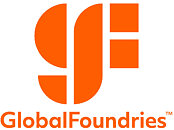EU Approves Formation of Artificial Intelligence Act
The European parliament has voted today on a proposed set of rules that aim to govern artificial intelligence development in the region. The main branch has approved the text of draft of this legislation—a final tally showed participant counts of 499 in favor, and 28 against, and 93 abstentions at the Strasbourg HQ-based meeting. The so called "AI Act" could be a world first as well as a global standard for regulation over AI technology—members of the European Parliament (MEPs) are expected to work on more detailed specifics with all involved countries before new legislation is set in stone.
Thierry Breton, the European commissioner for the internal market stated today: "AI raises a lot of questions socially, ethically, economically. But now is not the time to hit any 'pause button'. On the contrary, it is about acting fast and taking responsibility." The council is aiming to gain control of several fields of AI applications including drone operation, automated medical diagnostic equipment, "high risk" large language models and deepfake production methods. Critics of AI have reasoned that uncontrolled technological advancements could enable computers to perform tasks faster than humans—thus creating the potential for large portions of the working population to become redundant.
Thierry Breton, the European commissioner for the internal market stated today: "AI raises a lot of questions socially, ethically, economically. But now is not the time to hit any 'pause button'. On the contrary, it is about acting fast and taking responsibility." The council is aiming to gain control of several fields of AI applications including drone operation, automated medical diagnostic equipment, "high risk" large language models and deepfake production methods. Critics of AI have reasoned that uncontrolled technological advancements could enable computers to perform tasks faster than humans—thus creating the potential for large portions of the working population to become redundant.













































